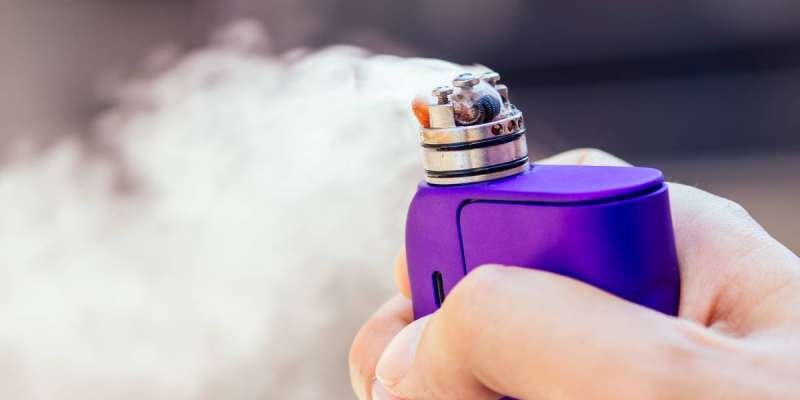Vaping has really taken off among teenagers around the world in recent years. What started as a way for adults to quit smoking has quickly caught on with younger people, which has parents, teachers, and health experts worried about this kind of lifestyle.
There are a bunch of reasons why vaping is so appealing to teens—things like clever marketing, peer pressure, easy access, and some misconceptions about how safe it is.
This article dives into why so many teenagers are into vaping, the risks that come with it, and what can be done to tackle the issue.
The Appeal of Vaping to Teenagers
1. Flavor Variety and Attractive Packaging
One of the key reasons teenagers are drawn to vaping is the availability of a wide range of flavours. Unlike traditional cigarettes, which have a strong and often unpleasant taste, vape products come in flavours like fruit, candy, mint, and dessert.
This variety makes vaping more appealing and enjoyable for young users. Additionally, the packaging of vape products is often colourful and designed to look trendy, making them attractive to teenagers.
2. Social Influence and Peer Pressure
Teenagers are heavily influenced by their peers, and vaping has become a social activity among many groups. Seeing friends or classmates use vape devices makes it seem normal and even desirable.
Social media platforms, where influencers and celebrities showcase vaping, also contribute to its normalization among teenagers. Many teens start vaping to fit in with their peers, avoid feeling left out, or appear trendy.
3. Perceived as a Safer Alternative to Smoking
Many teenagers believe that vaping is a safer alternative to smoking cigarettes. Unlike traditional tobacco products, which are known to contain harmful chemicals and cause severe health issues, vaping is often marketed as a “cleaner” option with fewer risks.
This perception, however, is misleading since vaping can still have serious health consequences, particularly for young people whose lungs and brains are still developing.
4. Easy Accessibility and Discreet Use
Despite age restrictions, many teenagers find it easy to access vape products. Online shopping, lax enforcement of sales regulations, and older friends or siblings providing access contribute to the widespread availability of vaping devices. Additionally, many vape devices are small, sleek, and easy to hide, making them convenient for discreet use at school, home, or social gatherings.
5. Nicotine Addiction and Dependency
Many vape products contain high levels of nicotine, a highly addictive substance. Teenagers who start vaping may develop a dependency on nicotine, leading to regular use and increased cravings. Nicotine addiction can affect brain development, leading to problems with attention, learning, and impulse control. The highly addictive nature of vaping makes it difficult for teenagers to quit once they start.
6. Influence of Social Media and Celebrity Endorsements
Social media platforms like TikTok, Instagram, and YouTube play a significant role in promoting vaping among teenagers. Influencers and celebrities who showcase vaping in their videos make it appear fun, harmless, and socially acceptable. Many teens look up to these personalities and are likely to imitate their behaviours, contributing to the growing vaping trend.
The Risks and Consequences of Teen Vaping
While vaping is perceived as less harmful than smoking traditional cigarettes, it still poses serious health risks, especially for young people. Some of the key dangers include:
1. Health Risks and Lung Damage
Vaping can cause severe lung damage and respiratory issues. There have been numerous reports of lung injuries associated with vaping, known as EVALI (E-cigarette or Vaping Use-Associated Lung Injury). Some teens who vape have developed serious breathing problems, chronic coughs, and lung inflammation.
2. Nicotine Addiction and Brain Development Issues
Teenagers’ brains are still developing, and nicotine exposure can interfere with cognitive functions, memory, and concentration. Nicotine addiction at a young age can also increase the likelihood of addiction to other substances later in life.
3. Increased Risk of Transitioning to Cigarettes
Studies have shown that teenagers who start vaping are more likely to transition to smoking traditional cigarettes. The habit of inhaling nicotine through vaping can pave the way for the use of other tobacco products, leading to long-term health issues.
4. Mental Health Concerns
Vaping has been linked to increased anxiety, depression, and mood swings in teenagers. Nicotine can affect the brain’s reward system, leading to changes in mood and behaviour. Many teens who vape may experience increased stress and irritability when they are unable to access their vape devices.
5. Unknown Long-Term Effects
Since vaping is a relatively new trend, its long-term health effects are still not fully understood. However, early studies suggest that the chemicals used in vape liquids can cause serious health complications, including lung disease and cardiovascular problems.
Addressing the Teenage Vaping Epidemic
1. Education and Awareness Campaigns
Raising awareness about the dangers of vaping is crucial in preventing teenage use. Schools, parents, and healthcare professionals should educate teenagers about the risks associated with vaping, including nicotine addiction and lung damage.
2. Stricter Regulations and Enforcement
Governments and regulatory bodies need to implement and enforce stricter laws regarding the sale of vape products to minors. Online sales should be more tightly controlled, and retailers caught selling to underage individuals should face strict penalties.
3. Parental Involvement and Open Conversations
Parents play a key role in preventing teen vaping. Having open and honest conversations about the risks of vaping can help teenagers make informed choices. Parents should also be aware of the signs of vaping and intervene early if they suspect their child is using vape products.
4. Alternative Coping Mechanisms for Stress and Peer Pressure
Many teenagers turn to vaping as a way to cope with stress, anxiety, or peer pressure. Encouraging healthy coping mechanisms such as sports, hobbies, and social activities can reduce the likelihood of teens engaging in vaping.
5. Support Programs for Quitting Vaping
For teenagers who have already started vaping, access to support programs and resources for quitting is essential. Schools, healthcare providers, and community organizations should offer counselling and nicotine cessation programs to help teens break their addiction.
Conclusion
Vaping has become a widespread trend among teenagers due to its appealing flavours, social influence, and perceived safety.
However, the risks associated with vaping, including nicotine addiction, lung damage, and mental health issues, cannot be ignored. Addressing this issue requires a collective effort from parents, educators, policymakers, and health professionals to educate teens, enforce regulations, and provide support for those who want to quit.
By taking proactive measures, we can help reduce the prevalence of teen vaping and protect young people from its harmful effects.











